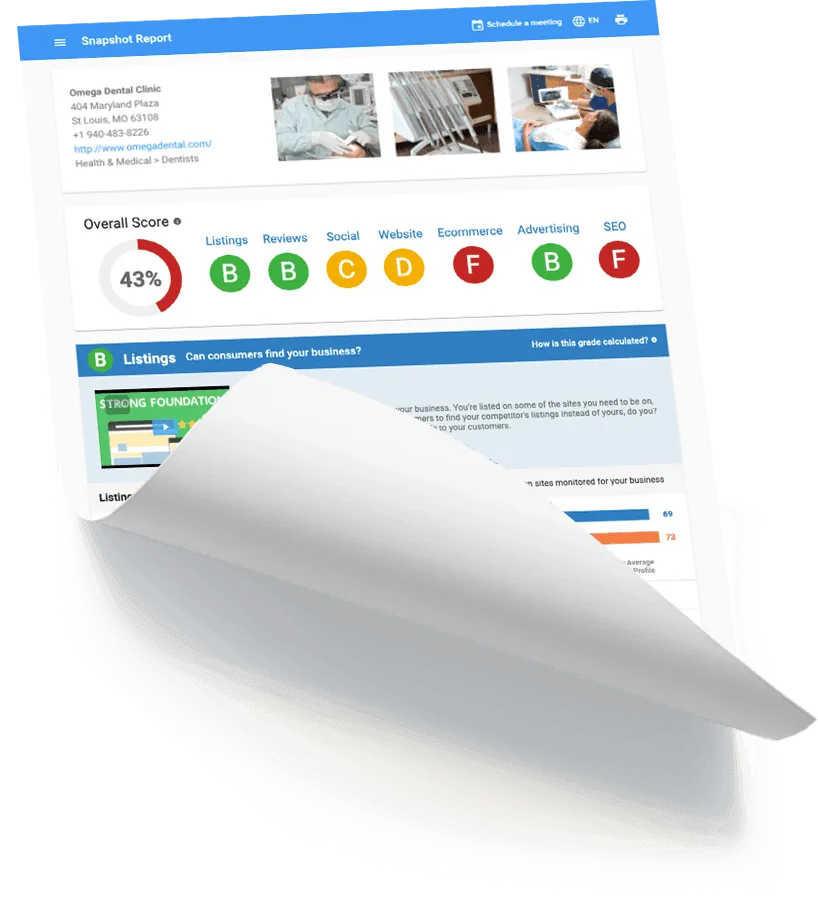When it comes to digital marketing metrics, there are tons of different numbers to track. To keep it simple, we’ve split these metrics up into broad categories of impressions, engagement, and conversions. These three categories will give you an overview of how well people are moving through your marketing funnel.
Impressions
Impressions are a high-level digital marketing metric. An impression occurs when somebody sees your post or advertisement. Impressions are typically recorded whenever your ad or content is visible on the screen of a user. The number of impressions that your marketing has gives you an idea of the overall reach of your digital efforts.
Some people may consider impressions a “vanity metric,” meaning that this number isn’t as important as engagement, sales, or conversions. And there is some validity in that impressions aren’t the ultimate goal. However, tracking impressions can lead to valuable insights that you can use to improve all of the digital actions you take.
Impressions lead to brand awareness for your company. People can’t buy from you if they don’t know about you. The top of a marketing funnel is awareness. The more impressions your brand has, the bigger your marketing funnel can be.

Impressions can guide decisions
If you’re just starting out with your digital efforts, you may not have other metrics like engagement or conversions to tell you what content is performing best. When this is the case, impressions can help guide your decisions going forward.
For example, if Post A got 50 impressions on a social media channel and Post B got 200 impressions on the same channel, you can use that data to guide you. If you know that one performed better than the other, you can start to dive in and figure out why. Was it posted at a time when more users were online? Does it seem like the social platform prefers one type of media over another? These are questions that will help you improve your social media marketing strategy, but you wouldn’t even know to ask them if you weren’t tracking impressions.
Engagement
As the name suggests, engagement happens when users engage with your digital marketing. When users start engaging more with your content, it can be a signal that they are progressing through the marketing funnel; they are moving from the awareness stage to the consideration stage.

Engagement comes in many different forms. Below are some of the more common ones that can be tracked on most platforms.
Likes
People “like” content to quickly and easily show their approval. Certain platforms, like Facebook and LinkedIn, allow users to quickly react to content in ways other than a “like.” Users can react to posts depending on they feel about those posts. These reactions are still considered engagement.
Comments
A comment is when a user offers their own reply to a post. A comment could really be anything. They can range from a simple single emoji to an essay about why this is the worst post someone has ever seen (hopefully it’s not the second one).
Because comments can be positive or negative, they can provide valuable feedback about what your audience likes and dislikes.
Since it takes a little bit more effort to leave a comment than it does to simply double-tap or click the like button, comments may be seen as more valuable than likes.
Shares
A share is when someone shares your post with their followers or network. Oftentimes, this signals that the person agrees with you or likes your content so much that they want other people to see it.
However, they may dislike or disagree with your content and be sharing it in order to speak negatively about it. While this is not the ideal situation, it will still give more reach to your digital marketing.
A share is a high form of engagement because it signals that a user wants other people to see your content.
Conversions
Conversions are ultimately what people are after in digital marketing. A conversion can take different forms, but basically, a conversion is when a person takes the action that you want them to take. Conversions are definitive a signal that a customer is making their way through the marketing funnel.

The actions that businesses will want users to take depends on their business model and current objectives. A few common examples of conversions can below.
Sales
When it comes to e-commerce, the conversion that businesses are usually wanting is a sale. In the digital world, a sale occurs when somebody buys your product online. This is obviously very important to businesses as sales directly impact the bottom line.
Leads
When it comes to digital marketing, a lead is a person who has expressed interest in your product or service. These conversions usually happen via an online form that allows the user to explain their needs to the business and leave their contact information.
Getting a lot of leads is a sure sign that people are moving through the awareness stage and into the consideration stage of your marketing funnel.
Sign-ups
Some businesses may not have a product to sell directly to users. Media companies, for example, may just want users to subscribe to them so that they can charge other businesses to advertise on their platform.
Sign-ups can still be a conversion objective even if a business does have a product or service to sell. When a person signs up for a free trial or an email list it signals that the person is interested in what the business has to offer.
Digital marketing metrics and your marketing funnel
By keeping an eye on each of these different types of metrics, you’ll be able to see how well people are moving through your business’ marketing funnel. This overview approach will allow you to spot where people are falling out of your funnel and what areas need improvement.
Monitoring these types of metrics will help you find what type of content works so you can double down on it while eliminating the digital marketing efforts that are not working.






